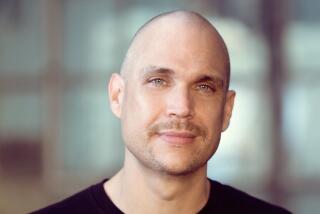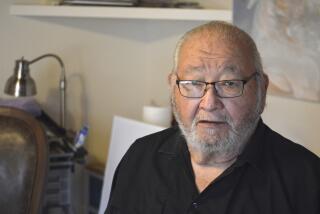Edwin Burrows, whose history of New York won a Pulitzer, dies at 74
Edwin G. Burrows, a historian who co-wrote the Pulitzer Prize-winning book “Gotham” — a sweeping and stylish chronicle of New York City from the Ice Age to the Gilded Age — died May 4 at his home in Huntington, N.Y. He was 74.
The cause was complications of a Parkinsonian syndrome, said his daughter, Kate Burrows.
Comprehensive histories of New York have been published as early as 1757, when jurist William Smith Jr. completed his colonial-era “History of the Province of New-York,” and 1809, when writer Washington Irving penned a satirical account of the city he dubbed Gotham, old Anglo-Saxon for “Goats’ Town.”
But few recent histories existed in 1999, when Burrows and his writing partner, historian Mike Wallace, published “Gotham: A History of New York City to 1898.”
Weighing nearly 5 pounds and spanning 1,424 pages, the book marshaled scholarship from social, intellectual, military, political and economic history to cover the years from the Native American settlement of Manna-hata (“hilly island”) to the consolidation of the five boroughs as the city of Greater New York.
“I know this sounds crazy, but there are probably 15,000 or maybe 20,000 books on New York City. Not a single one does what they did,” said Kenneth T. Jackson, a Columbia University history professor and editor of the “Encyclopedia of New York City.”
“The book is a towering achievement. It really is almost the only scholarly interpretive history of New York that’s based on a full knowledge of all the secondary literature.”
The book, as poet Walt Whitman might have said, contained multitudes. Its cast of characters included millionaire John Jacob Astor, social reformer Joanna Bethune, novelist Herman Melville and Tammany Hall’s William “Boss” Tweed, who together helped explain how New York became, in Whitman’s words, “the great place of the Western Continent, the heart, the brain, the focus, the main spring, the pinnacle, the extremity, the no more beyond of the new world.”
Beyond individual historical figures, “Gotham” also aimed to capture the emerging histories of race, class and gender in America.
“In the past we inherited, there wasn’t much about black people, or immigrants, or the working class. It was all about statesmen and politicians and so forth,” Wallace said on Monday. “We wrote the history to include the people who had been left out. In doing so, we changed the whole nature of the way you presented the story. You don’t just add in some new characters, you add things that explain racism, the history of domesticity, of sexuality.”
Burrows and Wallace met around 1970, in a graduate seminar at Columbia University, and together helped establish the Radical History Review, an academic journal that aimed to foster new, more inclusive approaches to history.
“With some megalomania,” Wallace said, they set out to present their methods to a general audience, by using new scholarship to write a comprehensive history of the United States. They made it partway through the 17th century when “it became clear that we would need multiple lifetimes, and we only had the two between us,” he said.
Refocusing their project on the history of a single city, New York, they divided the workload. Burrows, a Brooklyn College history professor with a background in early American studies, covered the 17th and 18th centuries. Wallace, a history professor at the John Jay College of Criminal Justice in Manhattan, covered the 19th and 20th centuries.
It took 20 years to produce “Gotham,” which fell more than a century short of covering the city’s full history. In 2017, Wallace continued the series solo with “Greater Gotham,” which devoted 1,196 pages to the 21 years between the first volume and the close of World War I. A third volume is projected to cover the years between the two world wars.
Burrows’ research for “Gotham” led to two smaller-scale projects, including “The Finest Building in America: The New York Crystal Palace, 1853-1858,” which he published in February. The book chronicled a glass structure at Reservoir Square, now Bryant Park, modeled after a similarly elaborate Crystal Palace in London. Both buildings were destroyed by fires.
He also wrote “Forgotten Patriots” (2008), which Jackson described as the first major history of American prisoners of war during the Revolutionary War.
Edwin Gwynne Burrows was born in Detroit on May 15, 1943. His father, Edwin Gladding Burrows, was a poet and radio producer. His mother, the former Gwenyth Lemon, was a social worker.
Ted, as he was known, planned to study physics before realizing he had a better aptitude for the humanities. He graduated from the University of Michigan in 1964 and developed an interest in New York history while at Columbia, where he received a master’s degree in 1966 and a doctorate in 1974. Burrows joined Brooklyn College in 1972 and retired from teaching in 2013.
He is survived by his wife, M. Patricia Adamski, and two children.
More to Read
Start your day right
Sign up for Essential California for the L.A. Times biggest news, features and recommendations in your inbox six days a week.
You may occasionally receive promotional content from the Los Angeles Times.






